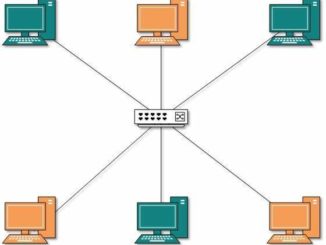
Lastly we are going to learn about virtual computers and related devices in this module. In order to utilise resource to their best the concept of virtualisation was introduced. With this the ease of communication has increased with less cost.
Networking Virtual Computers
A virtual computer is a program that imitates actual machine and works on the current operating system. A computer must be network-capable, to connect to a network. It means that it must have a working network interface controller (NIC). Virtual networking comprises of one or more virtual machines that can send data to and receive data from one another in which all the hardware objects are virtualized.
Virtual Switches
Virtual switches enable a virtual machines to connect to a virtual network. vSwitch works more or less like an actual switch and it controls communication between virtual machines. With the use of physical NICs (Network Interface Cards), a virtual switch connect virtual network to the physical network. Virtual machines are not only limited to communicating across the virtual network, they can transfer data to and from, all of the network-capable devices connected to the physical network. For this vSwitch bridges the connection between the virtual network and the physical network.
Virtual Servers
A very good way of providing a fast and cost-effective mechanism of resource control is a Virtual server. Multiple virtual servers may provide multiple virtual services like windows deployment, file server, web servers, etc. Instead of having multiple physical servers, we can have multiple virtual servers on one physical server. One of the most common examples of virtual server use is a virtual server environment for Web hosting. Instead of the need of a separate computer for each server, dozens of virtual servers can co-reside on the same machine. Performance is not affected until the servers are overburdened. The benefit is that one does not have to manage the hardware aspects of running a server.
Virtual Box
Virtual PBX stands for Private Branch Exchange. It offers low-cost business VoIP telephone service to small businesses. It is a telephone switch and call manager. It allows to establish, maintain and disconnect connections and provide call information. A virtual box has various features like voicemail, auto attendant, unlimited call handling (no busy signals) and call forwarding.
NaaS Network
NaaS stands for Network as a service. If one wants network service, NaaS provides it virtually over the Internet on a pay-per-use or monthly payment criteria. This is useful for customers who do not want to build their own networking infrastructure. Users can purchase this utility for a particular time period. The service package includes networking resources, services, and applications. There are various advantages of NaaS like one gets powerful resource for less money, it offers greater business continuity and backups, it is scalable and there is less need of in house management. Whereas there are some disadvantages also like there is less control and hence more security concerns, in some situations it can cost a lot, and as it is offsite there may be connectivity issues.



